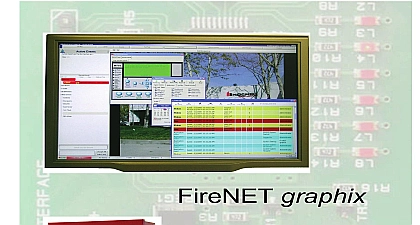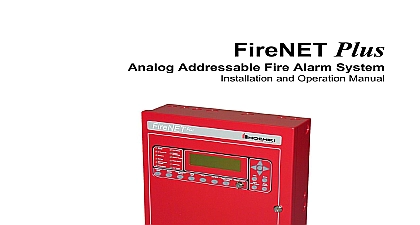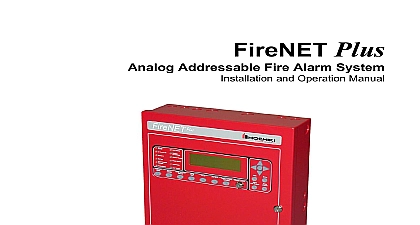Hochiki FireNET FN-DAC Dialer Manual Rev 1 0 021308

File Preview
Click below to download for free
Click below to download for free
File Data
| Name | hochiki-firenet-fn-dac-dialer-manual-rev-1-0-021308-1986420357.pdf |
|---|---|
| Type | |
| Size | 3.93 MB |
| Downloads |
Text Preview
FireNET FN DAC Alarm Communicator and Operation Manual 1.0 10 02 07 02 13 08 1700 10370 FN DAC Digital Alarm Communicator I O Manual v 1.0 of Contents 1 Introduction 3 Features and Specifications 3 Limitations of Fire Alarm Systems 4 Notices 8 FCC Compliance Notice 8 Telephone Requirements 8 Compatible Receivers 10 2 Installation 11 Parts List 11 Installing the FN DAC in the FireNET Panel 11 Installing the FN DAC in the FN LCD N Network Annunciator 16 Circuit Board Layout 23 Communicator Operation 24 Phone Line and Phone Number Selection 24 Phone Line Supervision 25 Report Groups 25 Communication Failure 27 AC Fail Reporting 27 3 Programming 28 FireNET Front Panel Programming 28 Loop Explorer Programming 33 4 Remote Access 38 Getting Connected 38 Setting the modem COM Port 38 Connecting to the FN DAC 39 Remote Access Features 44 Uploading copying the Network Configuration 44 Copying the Event Log and Analog Values 45 Virtual Panel 47 Sync Time 48 Downloading sending the Network Configuration 48 5 Testing Troubleshooting and Maintenance 50 A Reporting Summary 60 B Programming Record 63 C Application Note Zone and Address Programming 64 D Warranty 66 FN DAC Digital Alarm Communicator I O Manual v 1.0 1 Introduction FireNET FN DAC is a digital alarm communicator dialer that reports control panel network events to a central monitoring station The FN DAC meets the of UL 864 9th Edition Features and Specifications Contact ID and SIA Communication Formats Backup and Duplicate Reporting Programmable using FireNET Front Panel Interface or with Loop Explorer Remote Diagnostics and Upload Download Capability Full Phone Line Supervision Programmable Dialing Format Tone Pulse or Both Programmable Daily Test Report Interval Quick Installation in FireNET Enclosure Supply Voltage 24 VDC Standby Current 020 Amps Active Current 020 Amps Phone Line Connection Terminal Strip Minimum Phone Line Voltage 4 VDC Indoor Use only Size 2.48 x 7.48 Storage Operating Temperature 0 49C 93 Relative Humidity For FireNET Firmware Revision Required 3.8 Earth ground fault detection impedance is approximately 500K ohms between ground and the FireNET internal floating DC supply FN DAC Digital Alarm Communicator I O Manual v 1.0 Limitations of Fire Alarm Systems Recommended Installation Guidelines To achieve early fire detection fire sensors should be installed in all rooms and areas of a house apartment building in accordance with the recommendations of the National Fire Protection Standard 72 NFPA 72 manufacturer recommendations state and codes and the recommendations contained in Guide for the Proper Use of Smoke Detectors which is made available at no charge to all installing Generally the standards and recommendations include the following but should refer to the specific guidelines above before installing Sleeping Rooms Smoke detectors should be installed in every sleeping more than 30 feet long Hallways More than one smoke detector should be installed in a hallway if it At least Two Smoke Detectors There should never be less then two smoke per apartment or residence Smoke Detectors in Alarm Electrical or Phone Locations Smoke detectors be located in any room where an alarm control is located or an alarm connects to an electrical source or phone line If detectors are not so a fire within the room could prevent the alarm control from reporting fire Notification Systems All fire alarm systems require notification devices sirens bells horns and or strobes In residential applications each alarm initiating device when activated should cause the operation alarm notification device that should be clearly audible in all bedrooms ambient or background noise levels at least 15dB above noise with all doors closed Alarm in Every Bedroom and Level of Residence A smoke detector with an sounder smoke alarm should be located in every bedroom and an notification device should be located on each level of a residence Maintenance A maintenance agreement should be arranged through the manufacturer representative and maintenance should be performed by authorized personnel only To keep a fire alarm system in working order ongoing maintenance is required per the recommendations and UL and NFPA standards At a the requirements of Chapter 7 of NFPA 72 1999 shall be Test Weekly The alarm system should be tested weekly to make sure all and transmitters are working properly The most common cause of alarm system not functioning when a fire occurs is inadequate Cannot Guarantee Warning or Protection A fire alarm system cannot warning or protection against fire in every potential situation A study by FN DAC Digital Alarm Communicator I O Manual v 1.0 Federal Emergency Management Agency an agency of the United States indicated that smoke detectors may not go off or give early warning in many as 35 of all fires on Fire Alarm Effectiveness A fire alarm system may not provide timely adequate warning or simply may not function for a variety of reasons For No Detection Particles of combustion or smoke from a developing may not reach the sensing chambers of smoke d


